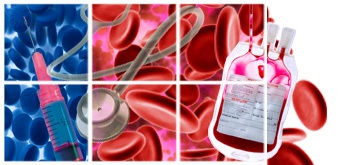The EPAS initiative focused on improving T-700 engine production at the Corpus Christi Army Depot (CCAD) using a comprehensive approach that combined process mapping and analysis, detailed work breakdown structures, part/material control and kitting, and shop floor decision support and scheduling systems.
Continue reading
Success Story: An Intelligent Framework for Systems Interactions
In a push to improve the interoperability of the complex systems that support joint-service and multinational operations–the ability for these systems to interact and share data–the Department of Defense created the Department of Defense Architecture Framework (DoDAF). The framework uses an architecture data model and repository system to establish a common approach and backbone for DoD architecture description development, presentation, and integration.
Success Story: Advanced Data Utilization Discovery
Collaboration is a hallmark of efficient, large-scale enterprises—collaboration at the basic level, among offices and employees and, equally important, collaboration among the systems of computer technologies that share enterprise data and information. Like employees, these technologies must communicate and must be able to grow and adapt with the developing needs of the enterprise. Enterprises like the Air Force and Department of Defense, who use large and complex computer systems to network an array of technologies—systems and technologies that are perpetually undergoing development—have a particular need for level of collaboration. KBSI’s Adaptive Toolkit for Pattern Discovery (ATPD) initiative, funded by the U.S. Air Force, developed technology that helps the DoD more effectively share knowledge and information among their elaborate computer systems.
Success Story: Biovigilance Reporting, Analysis, & Tracking
Most of the world’s industrialized nations have a comprehensive, national level biovigilance system that tracks events relating to blood transfusions and cell, tissue, and organ transplants, significantly improving the safety of these procedures. The U.S., however, currently lacks such a biovigilance system to track and analyze routine blood and blood product related procedures. In addition, in light of the current emphasis on national security, there is a critical need to analyze, in real-time, incidents of disease or safety issues to determine key performance metrics and trends, and to determine if the presence of these trends signal random events, possible outbreaks, or terrorist acts.
Comprehensive Blood Supply Management
Effective emergency response requires more than getting equipment and personnel to the scene. As important is determining what supplies are available and where they are available, as well as ensuring that required supplies are staged and deployed in a manner that meets the needs of the situation and any contingencies that might arise. Providing this kind of responsiveness requires two important capabilities: an awareness of what supplies are available, and the ability to communicate, easily and comprehensively, the status of those supplies. As any supply chain manager will tell you, inventory planning and awareness is critical to successful emergency response.Continue reading
Biovigilance Reporting, Analysis, & Tracking
Most of the world’s industrialized nations have a comprehensive, national level biovigilance system that tracks events relating to blood transfusions and cell, tissue, and organ transplants, significantly improving the safety of these procedures. The U.S., however, currently lacks such a biovigilance system to track and analyze routine blood and blood product related procedures. In addition, in light of the current emphasis on national security, there is a critical need to analyze, in real-time, incidents of disease or safety issues to determine key performance metrics and trends, and to determine if the presence of these trends signal random events, possible outbreaks, or terrorist acts.Continue reading
Adaptive Toolkit for Pattern Discovery (ATPD)
The ATPD technology is combining new machine learning techniques with advanced rule based methods for automated data utilization pattern discovery. The technology allows users to monitor information use, discover use patterns, and develop ontology models of these relations and patterns.
This capability enables users to monitor information use across systems, discover usage patterns, analyze patterns for potential new (and useful) concepts and relations, and offer intelligent assistance to enterprise knowledge modelers about the integration of newly learned concepts into evolving reference knowledge models.
Success Story: Toolkit for Agent-based Knowledge Extraction (TAKE™)
An important component in the design of new software systems, both with respect to schedule and cost, is the possible reuse of existing systems and knowledge sources in the new design. In other words, how can the redesign of a system’s ontology—the unique interrelations among the system’s components and entities—most effectively utilize existing systems and sources in meeting the needs that drive the new design? KBSI, leveraging their experience in knowledge based applications, tackled these challenges in a U.S. Navy sponsored project that is seeking automated methods and technologies for rapidly and cost effectively analyzing, redesigning, and re-engineering complex systems.
Toolkit for Agent-based Knowledge Extraction (TAKE™)
KBSI used a hybrid approach combining ontology engineering methods with cutting-edge knowledge discovery techniques to extract, analyze, and map ontologies from knowledge and data sources. The TAKE™ technology helps users to rapidly and cost effectively analyze, redesign, integrate and/or re-engineer their enterprise systems.
In the early phase of the initiative, KBSI established a novel TAKE™ ontology reuse and application method, designed innovative ontology analysis and ontology extraction algorithms, and designed the TAKE™ architecture. These innovations include the novel application of information fusion techniques for aggregated ontology similarity assessment and mapping the application of advanced knowledge discovery techniques for automated ontology extraction and mapping from multi-source text data. A demonstration of a prototype TAKE™ software tool was also demonstrated on a focused, high payoff Navy transition application scenario. The TAKE™ technology provides innovative solutions that address the problems associated with rapidly designing, developing, and deploying large scale knowledge based applications. KBSI’s overall approach in the initiative conceptualized and validated a framework and a methodology for sustainable knowledge management that encompasses the entire knowledge life cycle: capture/discovery, representation, analysis, validation, storage, retrieval, (in-context) delivery, and evolution over extended periods of time.
Success Story: Ontology-Driven Search Capabilities ( JACKALFISH®)
Like any other large-scale industry managing complex engineering projects, NASA and the Department of Defense face the persistent challenge of effectively discovering related information and data among distributed project teams and information sources. The Small Business Innovation Research (SBIR) office addressed this challenge by awarding KBSI a multiple phase SBIR project to design and develop an Ontology Driven Integration Framework (ODIF) that establishes a common ontology for integrating and searching diverse data sources.









